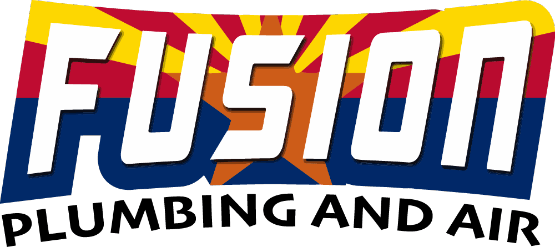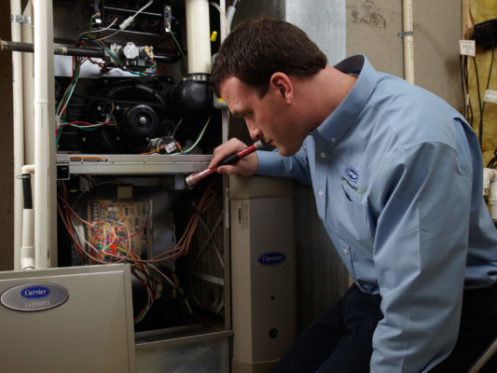Although homeowners here in Tucson, AZ don’t have to worry too much about heating, we do see enough cold winter temperatures that homes can’t go without it. However, the relative unimportance of heating means many homeowners don’t keep up with the latest technological developments in the industry.
Of particular interest are heat pumps, which are an ultra-efficient form of residential heating that’s well-suited to our climate. The one thing about those we hear from locals quite often is that heat pumps don’t work well when the temperature drops below 40 degrees Fahrenheit. Well, there’s a solution for that. It’s called a dual furnace system, and here’s everything Tucson homeowners should know about them. By the end, you’ll understand what they are, their benefits and drawbacks, and whether a dual furnace is a good option for you.
What Are Dual Furnace Systems?
As their name suggests, dual furnace systems bundle two types of heating systems together to provide ample heating capacity and unbeatable energy efficiency. In almost all cases, the two types of heating involved are a heat pump and a natural-gas burner system. The former offers a low-emission, high-efficiency heating source on cool days, and the latter serves as an auxiliary heating system that turns on when the temperature’s too low for the heat pump to produce enough heat. To understand why these two systems get paired together, though, you’ll first need to know a bit about heat pumps and how they work.
Why Isn’t a Heat Pump Always Sufficient Alone?
A heat pump is hands down the most efficient type of residential heating system on the market today. Under optimal conditions, modern heat pumps often operate at an efficiency level between 300 and 400%. The reason for that is the fact that heat pumps don’t actually produce heat at all. Confused? Here’s a simple explanation to clear things up.
Heat pumps don’t use electricity or burn fossil fuels to produce heat. Instead, they capture the heat energy that’s always present in the outside air. Even when the temperature outside feels cold to us, there’s still a significant amount of heat energy within the air. In fact, it would have to drop to -459.67 degrees Fahrenheit — absolute zero — for there to be no heat energy present.
That’s the key to the amazing energy efficiency offered by heat pumps. Since they only use a small amount of electricity to move heat from place to place, they’re far more efficient than any conventional heating system could be. However, when the outside temperature drops below 40 degrees Fahrenheit, the equation changes somewhat.
At those temperatures, it gets progressively harder for a heat pump to capture enough heat energy to heat your home. That means the heat pump must run longer to maintain your desired indoor temperature. Eventually, if it’s cold enough outside, the heat pump may not be capable of doing the job you need it to.
How Does a Dual Furnace System Work?
At around 25 degrees Fahrenheit, the average heat pump’s efficiency drops to the point that it’s no longer the most efficient heating option available. That’s where dual furnace systems come in. They include a high-efficiency natural gas burner that automatically activates when the heat pump’s efficiency drops below that of the burner.
That arrangement works well for a few reasons. First, it helps to ensure that your home never has a heat deficit, even on the coldest nights. It’s similar to how a hybrid car uses a small engine to give it a boost when traveling uphill or when the batteries run low. Think of it as an insurance policy against getting stuck without enough heat if we get an unusually long cold snap.
Second, a dual furnace system eliminates the biggest efficiency vulnerability of conventional heat pumps. Ordinarily, heat pumps come equipped with a heat strip or other type of electric resistance heater to use when they can’t capture enough heat. That’s a decent solution for occasional use. However, since electricity rates are typically high, a heat pump costs far more to operate in that mode. So, if you need auxiliary heat for more than a short while, it’ll cost you quite a bit of money.
Natural gas, however, is plentiful here in the United States and is, therefore, cheaper than electricity in most regions. It’s why natural gas furnaces are so popular throughout the country. They produce inexpensive and reliable heat. They’re the next-most cost-effective form of heating system you can use after heat pumps. So, putting the two together offers your home a best-of-both-worlds solution.
The Drawbacks of Dual Furnaces
By now, you’re probably wondering, if dual furnace systems are superior to heat pumps alone, why doesn’t every home use one? Well, there are a few drawbacks to dual furnaces that explain why they’re not more widespread. The first drawback is cost. Since they’re more complicated than a conventional gas furnace or a heat pump alone, they cost more upfront to purchase than either system.
Also, natural gas prices here in Tucson were so low for so long that many homeowners instead opted for traditional gas furnaces. The operating cost differential between a high-efficiency gas furnace and a heat pump didn’t always seem like enough of a reason to spend more upfront for a heat pump. That was even more true for dual-fuel systems.
Then, there’s also the fact that not every home has a preexisting natural gas hookup to work with. In those situations, the installation cost of a dual-fuel system can be much higher. And, there are some homes unable to get natural gas service to them at all. So, there are some situations where a dual furnace isn’t an option, even if it would otherwise be the perfect heating solution.
The Bottom Line on Dual Furnaces
Any way you look at it, dual furnaces offer an excellent and flexible heating solution for homes in a variety of climates. Here in the Tucson area, they can provide some extra peace of mind for homeowners considering a new heat pump. With a dual furnace, there’s never a chance that a cold spell would leave their home colder than they’d like it to be.
However, it’s a good idea to talk to the experts here at Fusion Plumbing & Air if you’re trying to figure out what type of heating system is the best fit for your home. Our expert staff and NATE-certified technicians know heating systems inside and out and will help you make a perfect choice. We offer an array of heating and cooling services, including installation, repair, and maintenance. Our team also handles drain cleaning, sewer and gas line repair, water heater repair and installation, water filtration, and other plumbing services. We’ve been the area’s go-to HVAC and plumbing contractors for over a decade, and you won’t find a more trustworthy comfort partner anywhere. So, call Fusion Plumbing & Air today to inquire about dual furnaces or any other heating, cooling, or plumbing need you may have!




